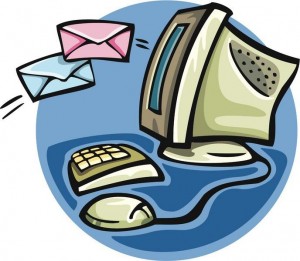By Tech Experts Staff
Everyone’s had them, you know those weird issues where one of your computers can get online or to your server but your workstation can’t. Or, when one building can get to the Internet or other network resources and your other building can’t.
Networking issues can be a real headache as they can be very difficult to track down. Without the proper equipment and knowledge, they can plague you forever. Fortunately we have solutions to those network gremlins that we see all too often.
This month we are going to touch on the common network issues we see and how we go about getting them corrected for you so that your network runs as it should.
Starting from your workstation and heading out to your Internet Service Providers (ISP) modem, we’ll work our way through some of the commonly seen issues.
Can’t reach the Internet.
This one we see frequently. When your workstation can’t get to the Internet (and other workstations on your network can), there are actually numerous issues that can cause this problem.
Some of the items your tech would (or should) be checking are:
Does the computer have a virus?
Viruses can cause all kinds of havoc when it comes to how your computer functions. Viruses can change the way that Windows networking acts and what it does.
 If some of the aspects of your computer’s operating system (OS) are changed by a virus, it’s possible you may not be able to get online.
If some of the aspects of your computer’s operating system (OS) are changed by a virus, it’s possible you may not be able to get online.
Is the connection from the computer to the router in good working order?
Sometimes people think that the answer to this question is as simple as “is the Ethernet cable plugged in tight,” and in most cases it is.
Sometimes the cables you may have been using for years might begin to cause connectivity problems. Cables that are constantly moved can have the wires within the cable ends worked loose. Ethernet cables used with notebooks and laptops are especially prone to this.
Once the right cables work themselves loose you are likely to either see sporadic connection problems or you may not have any connection at all.
These types of issues while not as common as virus or operating system issues tend to be more difficult to track down.
While a tech could go through all of the cables on your network when you have a connection problem, doing so can take a lot of time.
This isn’t normally the first course of action unless they specifically see symptoms that indicate this type of issue.
Some of the other issues that can cause a workstation to lose connectivity are faulty routers, switches or modems.
In the case of any of these pieces of network equipment, if the ports on them begin to fail users may have a lot of issues, from dropped packets resulting in slow Internet performance, to no Internet connection at all and everywhere in between.
The last possible place for connection issues is your ISP’s modem. Generally a tech can roughly troubleshoot this piece of equipment, but because your ISP manages it, there is only so much a tech can do to correct problems on this type of equipment. We can usually isolate the trouble to the modem, but after that, the ISP takes over.
If a tech finds an issue with your modem you would need to have your ISP’s techs come out and look into the issues with their modem.
No matter what issues your workstation is having we can trace them back to the root of their cause.
Give us a call and we’ll get you back up and running ASAP.


